How to Efficiently Manage a Sales Team: 7 Actionable Steps

Summary
- The structure of the sales team in 2025 must take into account the type of product and the way customers interact, whether inbound, outbound, or remote.
- Tools such as CRMs, automation, and training platforms help to effectively manage over 3,000 users in sales departments, increasing conversions and predictability of results.
- Constant monitoring, establishing clear KPIs, and team recognition lead to sustainable performance and secure long-term growth. More beneficial insights for your business and sales team can be found in the article below.
Besides the general objective of satisfying a need, solving a community problem, positively impacting society, or innovating in a specific industry, every company strives to maximize its profit, and this undoubtedly depends primarily on how well its sales department or team is managed.
A sales team that brings truly notable results requires management with a more strategic approach, including structured communication, continuous training, organizational culture, and a pleasant atmosphere in the team, while monitoring the team's progress.
In this blog post, we will explore the most effective practices for managing a sales team in 2025, underscoring the best tools and strategies to guide sales managers in leading their teams productively after hiring.
How to Structure Your Sales Team in 2025
Leading a sales team starts with the structure - basically, this is about how the sales department is organized based on product type and customer buying preferences.
There are several models to structure your sales team:
1. Inbound Sales is when customers come to you
- Salespeople work with people who have already shown interest (e.g., they filled out a form, requested a quote).
-
The focus is on education and consulting, not on "hard selling".
-
It works well if the company has strong marketing (SEO, social media, advertising, webinars, etc.).
2. Outbound Sales is when you go to customers
-
Salespeople contact people who don't know about the product yet.
-
Involves cold calling, email outreach, attending events, etc.
It is divided into:
-
Inside Sales - sales made remotely (telephone / online)
-
SDR = find and qualify leads
-
AE (Account Executive) = close the sale
-
-
Field Sales - face-to-face sales
-
for complex products (medical, industrial, enterprise software, etc.)
-
3. Remote Sales / Virtual Sales - outsourced sales / made 100% online
-
Salespeople can be freelancers or external agencies who sell on your behalf.
-
Good for companies that do not yet have the resources to hire an internal team.
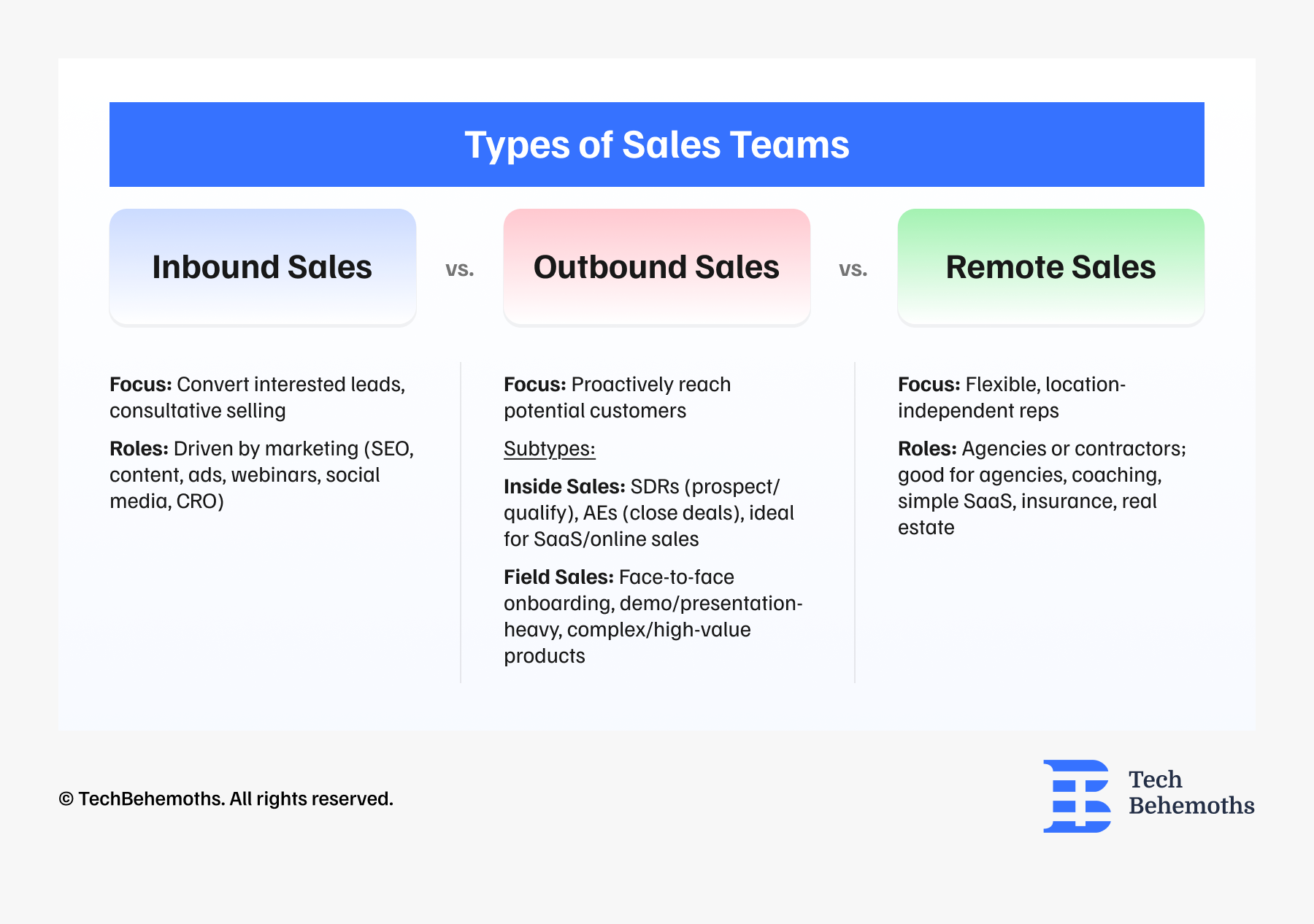
Therefore, the typology or rather the distribution of sales teams is conditioned by these 3 important aspects:
-
Who initiates the contact - the customer or you
-
Whether the sale is made online or face-to-face
-
Whether the team is internal or outsourced
Once the organization of the sales team corresponds to the way customers buy and the complexity of the product, companies obtain not only a more predictable and repeatable process, but also an increase in sales and conversions, due to the fact that leads are handled faster and by the right people.
Sales Team Management Tools (2025)
At the beginning of a business, it is easy to manage sales manually (in Excel, in WhatsApp, in a notebook, etc.) if you have a few customers and manage to keep a manual record of them.
Challengers appear once the business grows, you have more customers, you enter new markets and it becomes increasingly difficult to track everything as before, because the manual can no longer cope, and with that you risk losing leads, forgetting to follow-up, and inevitably decreasing the productivity of the sales team.
To prevent this from happening, businesses must switch to automation - using tools (CRM, automatic follow-up, notifications, reports, pipeline tracking, etc.), preferably low-code or no-code, so as not to need the expertise of a programmer. (if the field of activity allows it)
Automation frees up the team's time to focus on what really matters: selling, not filling out tables and databases.
Here is the recommended list of tools that will help you monitor, manage and properly evaluate all sales processes and details, including communication and customer service of the sales team.
1. CRM Systems (e.g., Salesforce, HubSpot, Pipedrive)
→ Systems that keep track of all your customers and offers in one place. With their help, you can track who asked for what, what stage each sale is in, and never lose sight of your leads = potential customers.
2. CPQ & Document Automation (e.g., DealHub, PandaDoc)
→ These tools automatically generate prices, offers, and contracts, saving you time spent on manually created PDFs.
3. Revenue Intelligence / Call Analysis (e.g., Gong, Chorus.ai)
→ These are programs that record and analyze sales calls, so you can see what works and better estimate the chances of closing - great for improving your team's pitch.
4. Sales Engagement (e.g., Outreach.io, SalesLoft)
→ Tools that help automate messages, follow-ups, and contact sequences with potential customers.
5. Prospecting & Lead Data (e.g., ZoomInfo, Pepsales AI)
→ Platforms that find and verify potential customers (including emails, positions, company, etc.), so you don't have to search for them manually.
6. Communication & Collaboration (e.g., Slack, Microsoft Teams)
→ Internal channels through which the team communicates quickly and stays in sync.
7. Training & Enablement (e.g., Allego)
→ Platforms for training the sales team, which provide materials, coaching and examples of best practices.
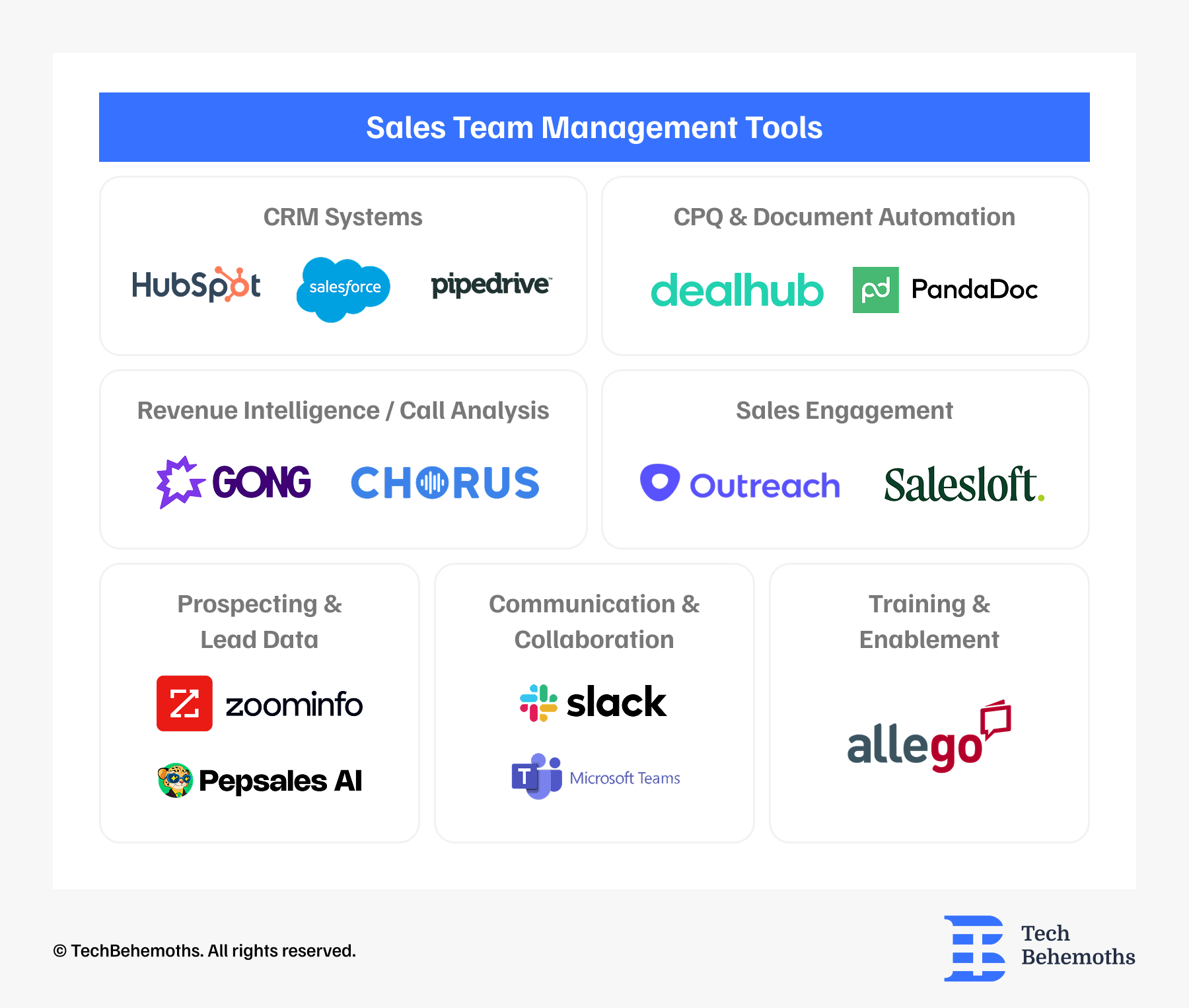
7 Steps to Effectively Managing a Sales Team
1. Understand Your Role, Responsibilities, and Sales Goals
As a sales team manager, it is essential to first clearly understand the objective - what is expected of you and your team, and what responsibilities need to be set for each person to achieve it. Observe how the team works on a daily basis by tracking activities, how they achieve their goals, and how they interact with each other. Analyzing past and present performance is a good strategy and also the main strategy in managing your sales team. Recommend analyzing results, sales figures, goals achieved, but also behaviors, attitude, and engagement.
Concrete steps to take would be:
-
Speak with senior management to define:
Sales goals - let's say the team needs to hit a quarterly target of $500,000 in revenue and a 25% conversion rate on qualified leads.
Management expectations - you may need to streamline your follow-up process or reduce your average closing time by 15%.
Current issues - conflicts between team members, lack of clarity in reporting processes, or ineffective communication between regions.
-
Hold one-on-one and group meetings with team members to understand their perspectives:
Let's say one member may mention that prospects are poorly qualified or that they don't have access to certain CRM tools needed to follow up on leads. Another may have ideas on how to shorten the closing process using email templates or a shared playbook.
-
Use this information to establish clear KPIs:
Number of meetings with potential customers, average sales value, conversion rate per representative, average closing time, and other figures will be useful in establishing the right KPIs for your sales team.
2. Set clear expectations and communication standards
Sales goals are set, now you will need to define a plan that sets out exact expectations for the entire team, as well as for each individual on that team. Practice proves that, without predefined rules, people will work according to their own subjective interpretations and beliefs or will hold on to old habits, such as from the experience of the job/team they worked on in the past.
Therefore, to avoid confusion and failures in productivity, it is important for you, as a manager, to establish a few essential points, including:
-
Standards for the sales process (pipeline, follow-up, closing).
-
Rules for CRM use, reporting, and punctuality.
-
Frequency and structure of meetings (e.g. weekly + monthly 1:1 team meeting).
-
Be consistent in applying these rules and communicate them from the beginning.
3. Evaluate and train your team continuously
Let’s look at some real-world examples of how you can do this most effectively.
HubSpot explains that a sales process is the blueprint that keeps your team aligned: “Your sales process should be the foundation of everything your sales organization does - from prospecting to closing deals.” The company uses a standardized 6-step sales process that is unique to all sales reps.
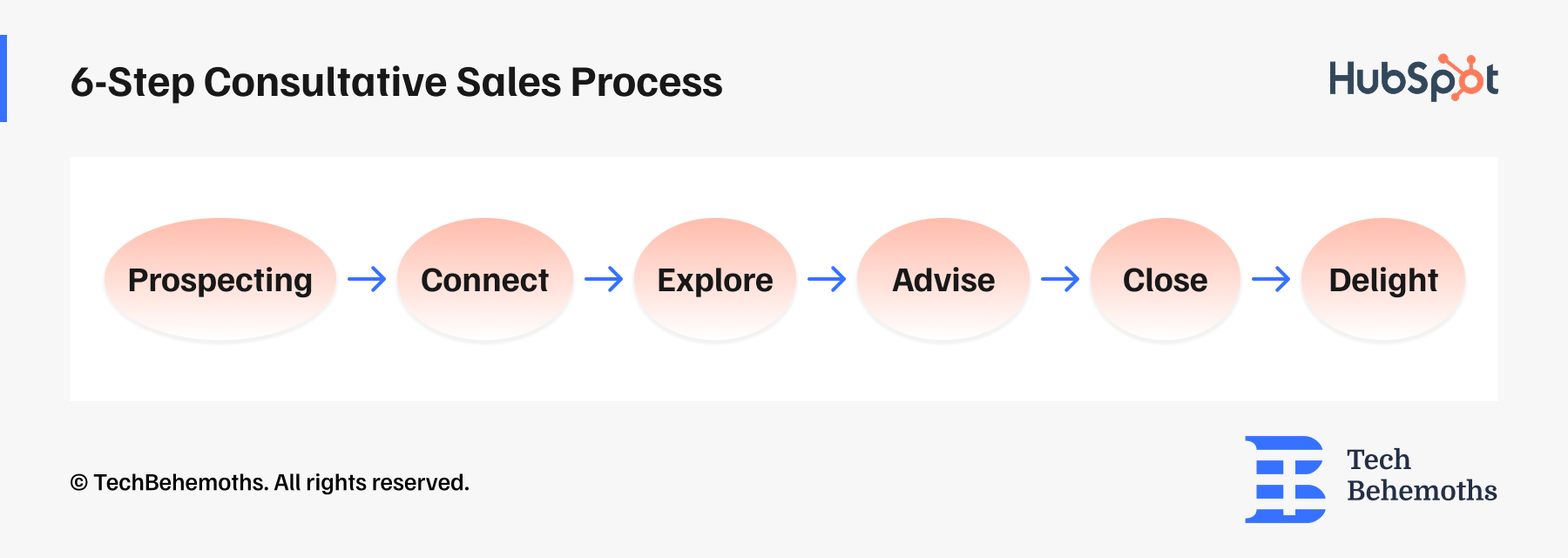
They’ve published their full framework in their Sales Playbook, and every sales rep works with the same templates, criteria, and qualifications (BANT + GPCT).
The process is paying off, as HubSpot consistently reports growth in ARR, and one of the reasons cited is “consistent sales methodology across global teams.”
Also, they explain in an article published by them that the difference between process and methodology consists in the fact that a sales process is a series of actionable steps your sales team follows to convert prospects into customers, while a sales methodology is a broader philosophy that guides how your team approaches each step of that process.
The process tells you what to do, the methodology tells you how to do it. - Hubspot
Another worthy player in the technology field - Salesforce, uses a unified methodology that combines MEDDICC + Standardized Playbooks for all global teams.
The standard steps that they often offer in their trainings are:
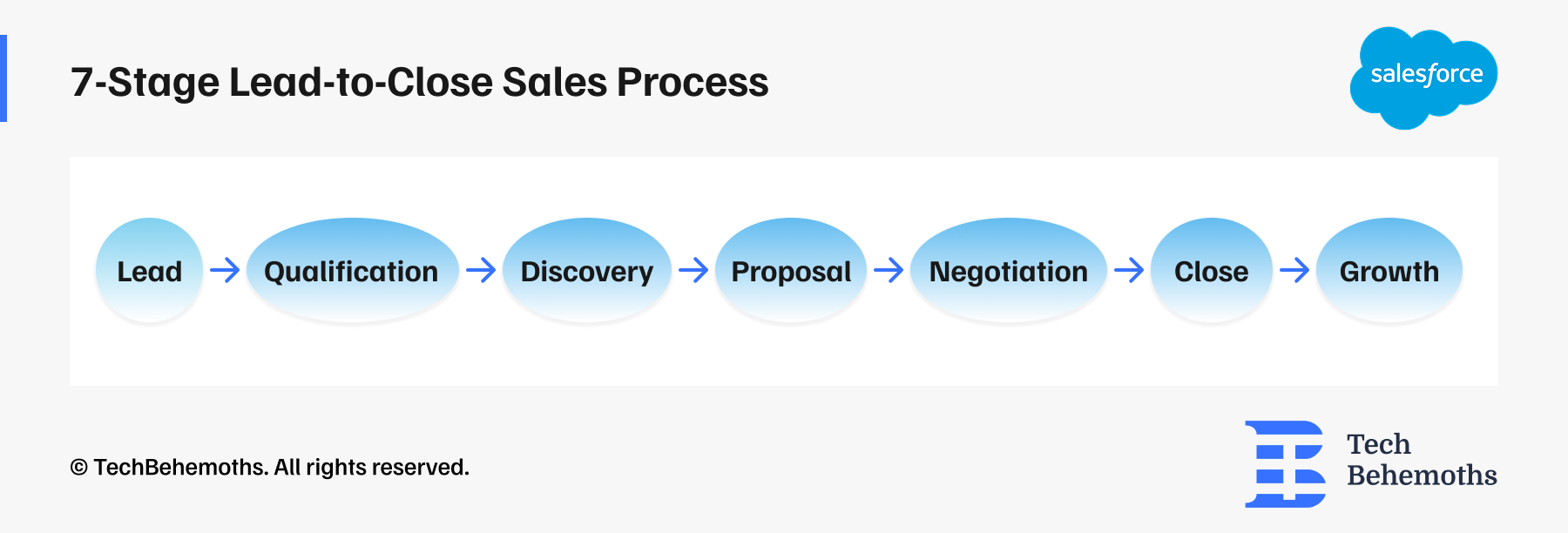
They also guarantee that by following the process in the following order, you are prone to predictable growth due to “process discipline and forecasting accuracy”.
A case study from Gong shows that using their platform allowed Tinuiti to achieve a 50% increase in recurring cross-selling revenue through standardization, insights, and a consistent process.
So, after you estimate your sales process, make sure that everyone follows the same steps, with the same language and evaluation criteria. As I have deciphered previously, using a methodology (e.g. IMPACT Selling® or another model adapted to your business) will bring you:
-
Clarity in communication.
-
Predictability in results.
-
Simplification in reporting and management.
5. Motivate, Recognize, and Build a Strong Team Culture
Due to several specific causes, the field of sales, and in general negotiations, can cause high stress and pressure to any team member, regardless of the level of hierarchy they are in, which is why a flexible and motivating atmosphere is necessary to support a smooth workflow.
As a manager, your responsibilities include creating a culture based on trust, motivation, and recognition, with concrete actions that would look like this:
-
Reward achievements (bonuses, public recognition, small benefits).
-
Encourage continuous learning and professional development.
-
Create a positive environment where people feel valued, not controlled.
-
You can introduce team initiatives (mini competitions, best practice sharing sessions).
Following the example of the company LinkedIn, which implemented the "Bravo!" program in collaboration with Workhuman: a global peer-to-peer recognition and reward program, you can see how strengthening organizational culture and engagement has resulted in higher retention and stronger cross-team collaboration.
Studies show that peer and public recognition can have a major impact on team engagement and retention, and here comes confirmation, where a Globoforce/Workhuman survey found that 41% of employees want to be recognized by a peer, and 37% want to be recognized by their managers.
6. Use the Right Technology and Tools
In addition to a suite of soft skills, a manager must also have the right technical skills to properly invest in technology that optimizes the work of the sales team:
-
CRM software for tracking leads and automated reports.
-
Automation tools for email follow-up, reporting, and reminders.
-
Analytics dashboards for real-time performance visualization.
-
Update your tools regularly and ask your team for feedback on what's working.
It was demonstrated that CRMs that allow for complex customizations and use automated workflows can increase revenue by 29%, as well as increase conversion rates by 300%.
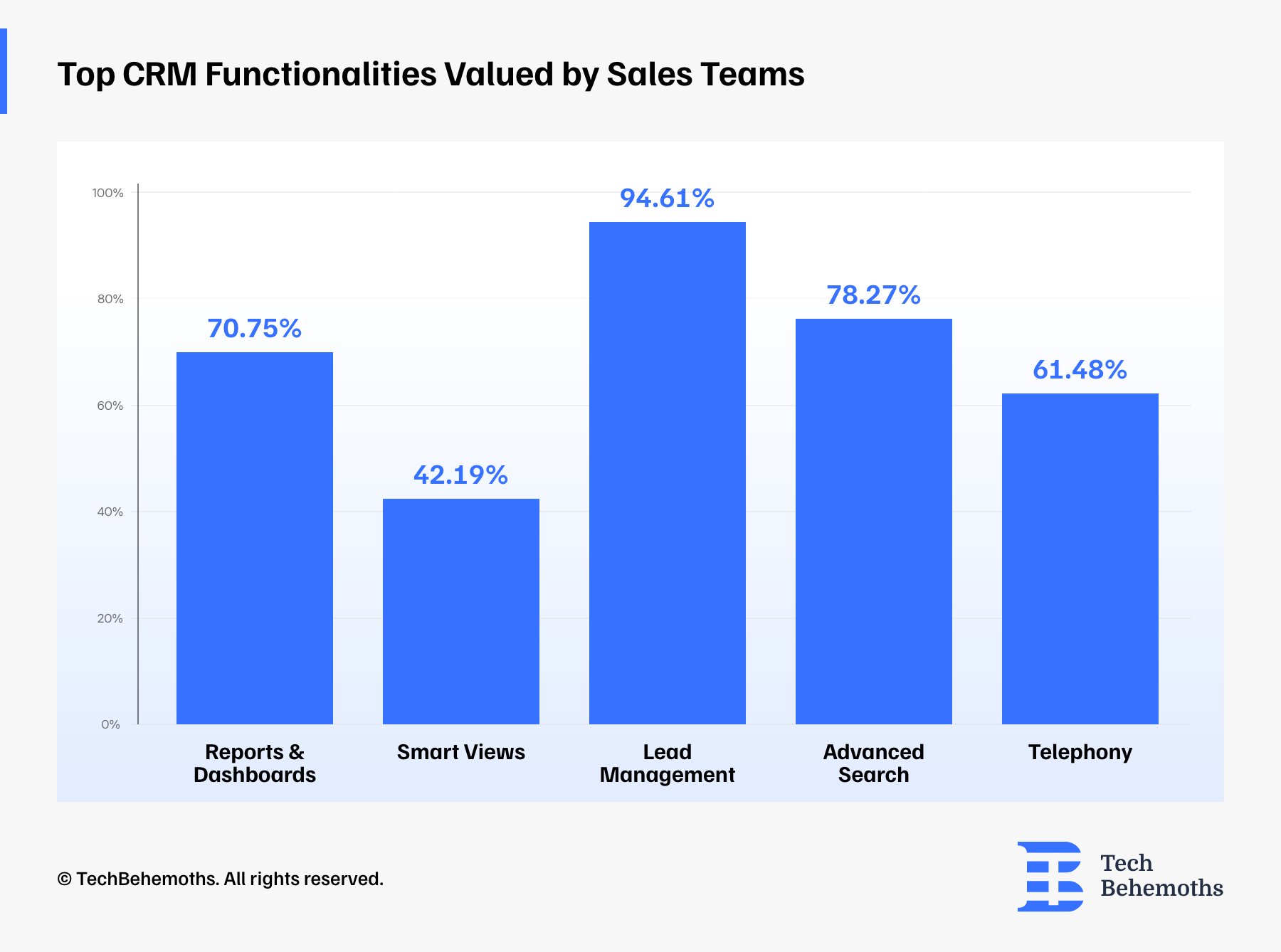
Over 3,000 users from sales departments who participated in a survey conducted by LeadSquared, the two most appreciated CRM functionalities by users were identified as: Lead management (managing potential customers) and Reporting (generating reports and analyses).
In the HubSpot article on the best sales methodologies, it is clearly indicated that: A structured sales methodology provides repeatable steps and proven techniques that help your team close more deals
, and in this case they often come to support these steps: "CRM systems, automation tools, and performance dashboards support the methodology by giving reps the visibility and efficiency they need to execute consistently."
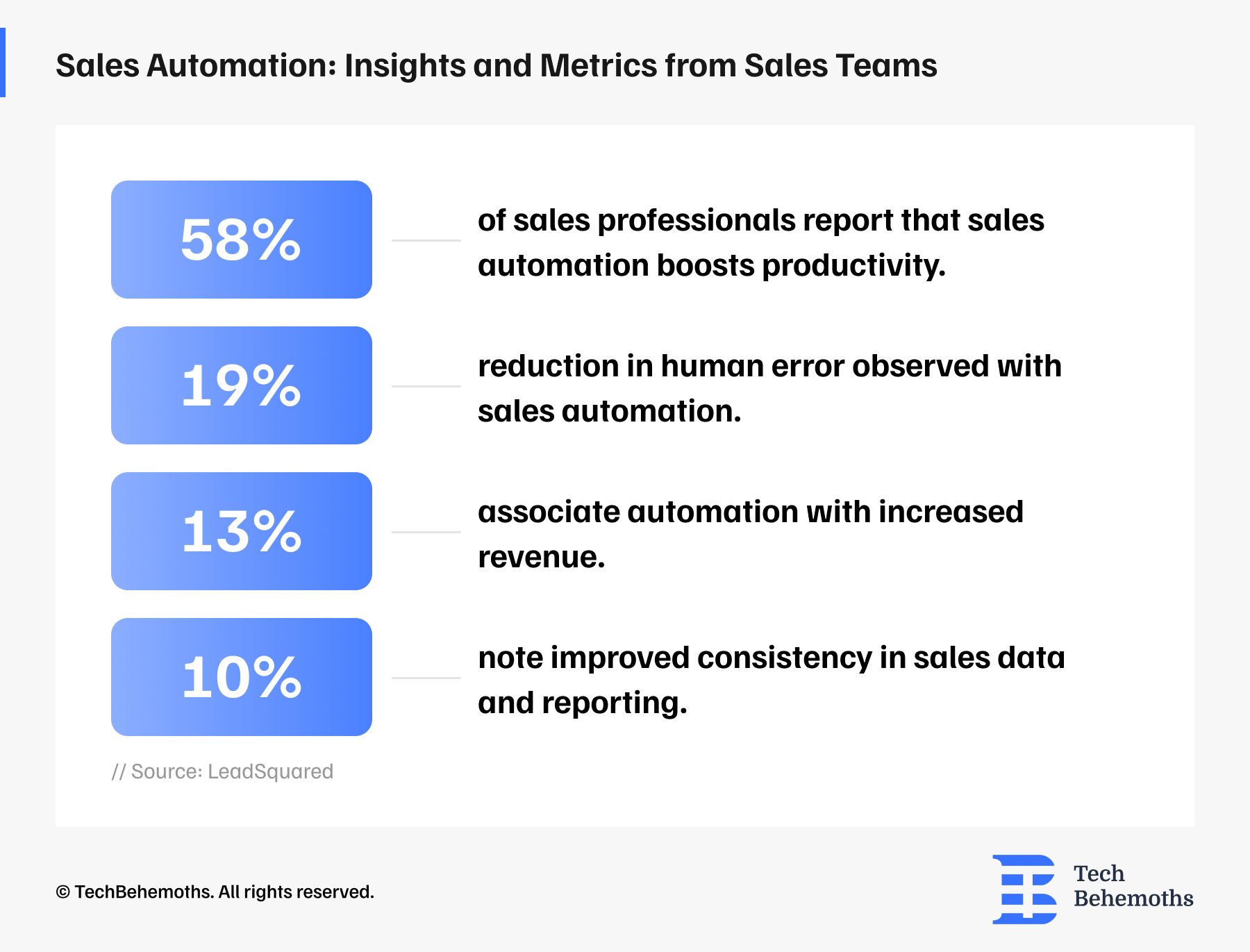
Gong's economic study shows that sales intelligence tools, through automation and conversational analysis, can generate hundreds of percent ROI, improved forecast accuracy, significant reduction in onboarding time, etc.
7. Monitor, Adjust, and Celebrate Progress
Effective leadership doesn’t end with implementation.
It would mean constantly monitoring performance, adjusting goals, and even if it doesn’t seem very important, don’t forget to celebrate progress, even the small ones:
-
Send updates with team achievements (monthly/weekly).
-
Reward top performers.
-
Analyze data to identify what needs to be improved.
-
Be an adaptable leader who evolves with the market and the team.
According to the research about recognition culture, using continuous recognition programs (not just annually) contributes to retention and performance. Recognition isn’t about handing out awards once a year.
– but about real-time recognition of behaviors that generate performance: When employees feel seen and valued regularly, their engagement and performance increase dramatically.
“Your sales process is not a one-and-done document. It should evolve as your customers, your team, and your market change. Continuously analyze performance data, identify bottlenecks, and improve your process over time to maintain efficiency and competitiveness.” - Hubspot
This indicates that monitoring and adjustment are essential components in improving your sales process, in resolving the gaps that are included in it, and in maintaining the talent in your sales team.
What defines a successful sales team?
The basis of the success of a sales team is first and foremost a good knowledge of the product/service being sold, especially the benefits or added value it brings to the consumer, in order to offer them the best solutions, resulting in the best conversions. The sales team must be led by a mindset centered on the consumer, not on sales, the mistake that sales members who are not sufficiently competent make. Also, key pillars would be strong communication and an accurate, disciplined process, all supported by preparation, persistence, and ethical behaviour. They build trust, anticipate needs, and consistently convert relationships into long-term revenue.
8 core traits
-
Product mastery - knows the product inside-out, its benefits, use cases, and common objections.
-
Customer understanding - researches and targets the right audience; tailors the pitch to the buyer’s real needs.
-
Customer-first ethics - recommends only what benefits the client; avoids pushing unsuitable purchases.
-
Trust & patience - builds rapport over time rather than rushing the process; values long-term relationships.
-
Clear communication & friendliness - opens conversations well, asks questions, listens actively, and stays approachable.
-
Preparedness & agility - has elevator pitch, CTAs, follow-up plan, and materials ready; stays one step ahead.
-
Experience & continuous improvement - learns from every call, practices techniques, and invests in training.
-
Professionalism & goal focus - sets measurable goals and presents a credible, polished image.
Summing Up
The efficiency of a sales team management in 2025 is more than monitoring tasks and KPIs day by day; it requires a real strategy, a lot of internal communication, constructive criticism balanced with a visionary approach, leadership of the general manager of the team, and orientation towards continuous development. By implementing a well-structured process covering all the steps and details related to a sale made from start to finish, using the necessary tools accompanied by quality training, companies can improve their sales teams efficiently, delivering performance and gaining secure and long-term growth.
Concluding, an efficient management means, of course - investment of resources (financial, human, temporal, informational, etc.), but also well-thought-out management practices that not only stimulate sales results, but also build a motivated and performing team, capable of functioning equally well and autonomously, adapting to future challenges.
Related Questions & Answers
How much time do sales reps typically spend in a workweek on actual selling?
What difference does adopting AI and modern technology make to sales team performance?
Does sales coaching actually improve closing rates?
What role does psychological safety play in sales team results?